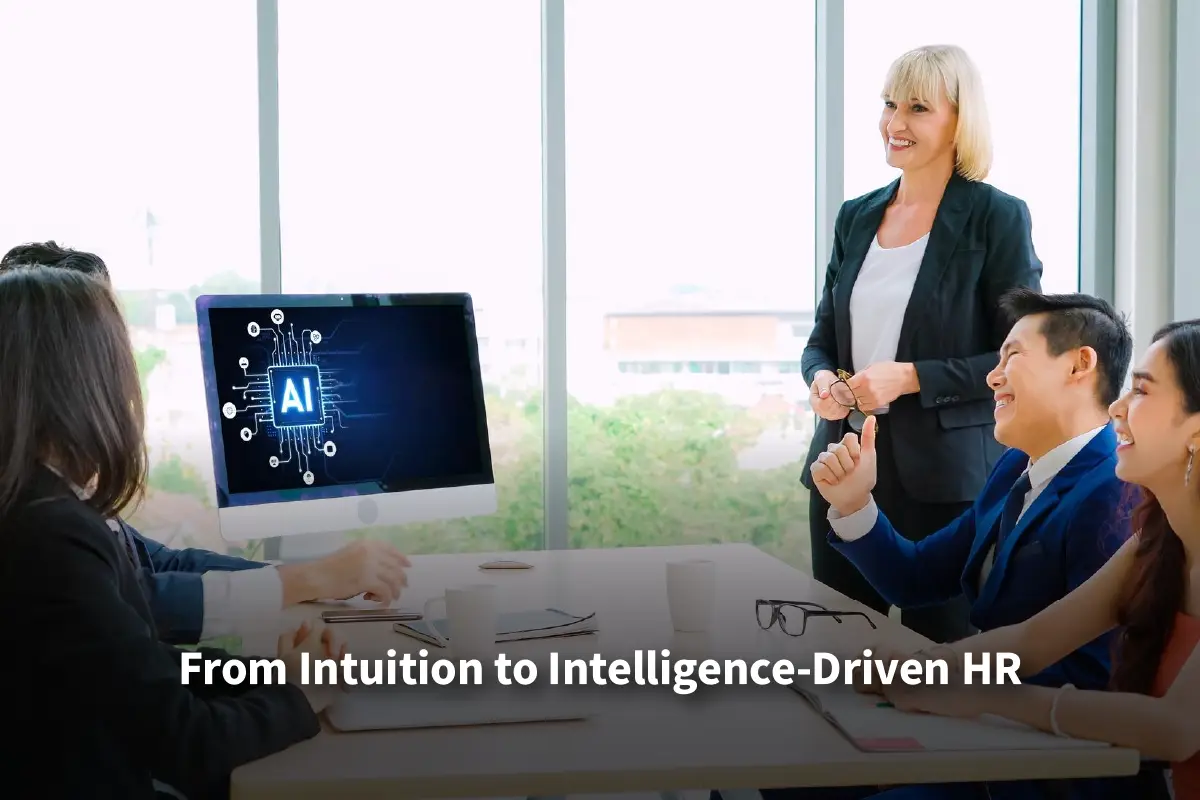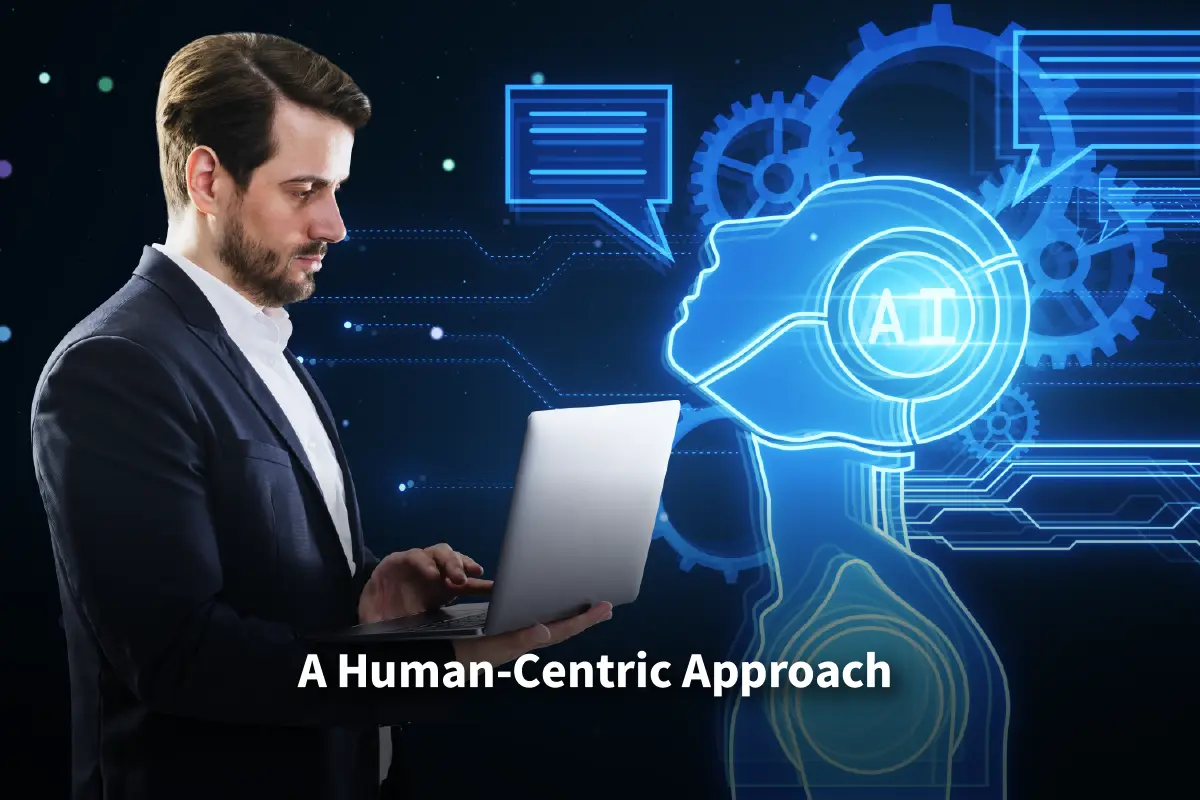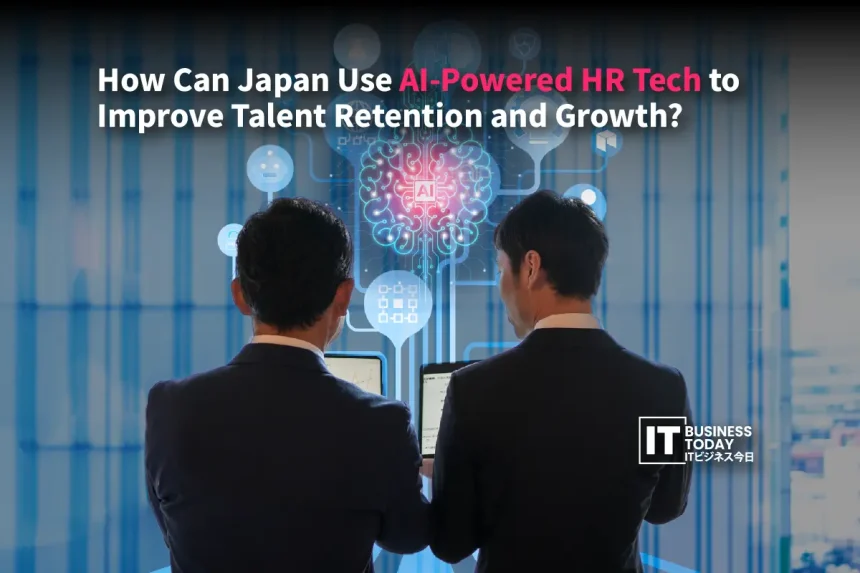For decades, Japan’s corporate strength has come from its people. The model of lifetime employment, strong company loyalty, and careful training created global giants. Yet, the gears of this engine are straining. A demographic winter, changing workplace values, and tough global competition for skilled workers have created a perfect storm. Traditional HR practices, designed for the past, find it hard to retain top talent. They also can’t support the agile growth needed for the future. The pressure is evident in the numbers, Japan’s average employee turnover rate now stands at 12.8%, with smaller firms facing even steeper challenges, as 15.3% of workers at SMEs leave within a year compared to only 7.3% at large firms.
Business leaders in Japan now face a crucial question: not whether to adapt, but how to do it quickly and effectively. The answer may surprise you. It’s not about leaving behind traditional values. It’s about boosting them with a strong, modern tool: Artificial Intelligence. AI-powered HR technology changes the game. It shifts HR from a reactive role to a proactive, strategic partner. This helps with talent retention and growth.
Understanding the Roots of Talent Attrition
We need to clearly identify the problem to understand the solution. The challenge is multifaceted. Japan is aging faster than any other major economy, with nearly 30% of its population now aged over 65. An aging population and a smaller workforce lead to a talent shortage. This shrinking workforce makes every skilled professional even more valuable. Employers are deeply concerned, with 57% saying they are ‘very concerned’ about talent shortages, a sharp increase from 48% just a year before. This makes every skilled worker highly valuable. The new generation of Japanese professionals is very talented. Many people look for purpose, flexibility, and clear ways to grow personally. These values might be missed by the old seniority-based system.
Also Read: Can Japanese Enterprises Optimize Legacy IT While Embracing Cloud Workloads?
The result is a quiet exodus. Employees often disengage not just due to salary. They may feel a lack of visibility, feedback, or opportunity. They feel like cogs in a vast machine. Annual reviews are too rare and often biased. They don’t truly reflect performance or feelings. A manager often finds out a key employee is unhappy too late. AI shifts from a buzzword to a must-have tool. It offers a data-based approach to grasp and enhance the human aspect of business. Moreover, workplace values are shifting. A 2025 survey revealed that 45% of Japanese workers admit to ‘quiet quitting,’ doing only the bare minimum due to a lack of career growth or poor work-life balance
From Intuition to Intelligence-Driven HR

AI in HR isn’t here to replace human managers with cold algorithms. Quite the opposite. It’s about helping leaders and HR pros get valuable insights. They can then make better, more human-centered decisions. And Japanese organizations are ready: 97% expect AI to deliver significant strategic value, and they are 2.8 times more likely to invest in developing existing talent than recruiting externally. It helps us see each person in a big organization. We can learn what motivates them and build personal paths for their success.
Think about shifting from a one-size-fits-all method to a custom experience for each employee. This is the core promise of AI-powered HR tech. It analyzes large and complex datasets. These consist of project contributions, skill certifications, survey answers, and communication habits. All of these have strict privacy safeguards. This helps identify patterns and predictors that humans can’t easily see. This intelligence helps companies act before problems happen, not just after.
Cultivating Loyalty Through Development
This technology helps make highly personalized career development plans. Many traditional training programs are generic. They focus on big groups, hoping some content will connect. AI changes this dynamic entirely. In fact, 94% of Japanese organizations now prioritize upskilling, and 95% see technical training as a proven tool for retention. AI platforms can create a personalized learning path for each employee. They match a person’s skills, career goals, and learning styles to the company’s objectives.
This could mean:
- Recommending an online course to fill a skill gap.
- Suggesting a mentorship with a senior leader in the field.
- Highlighting an upcoming internal project for valuable experience.
For the employee in Nagoya dreaming of a global role, the system may suggest language training. It could mean a project that involves both our team and the Singapore office. This personal attention tells employees the company cares about their journey. It builds a strong sense of value and belonging, which helps keep them more than any bonus.
From Exit Interviews to Retention Strategies
The most powerful aspect of AI is its predictive capability. HR tech now looks at behavior and engagement data. This identifies employees who may leave, like how e-commerce sites predict your next buy. These systems detect subtle signals. They look for a drop in network activity. They see changes in the tone of communication. They also notice less participation in optional events. Odd patterns in expense reports might also indicate interview travel. Studies show that advanced AI models like GPT-3.5 can predict attrition with precision of 0.91, recall of 0.94, and an F1-score of 0.92, significantly outperforming older machine-learning models.
When these risk flags are raised, the system can alert a manager or HR business partner. This allows a caring, private chat before the employee updates their resume. The manager might say, ‘I see you’re facing challenges. How can we help you?’ This simple question turns a transaction into a caring connection. It helps companies deal with issues like workload, new challenges, and team problems. This shows a strong commitment to retaining valuable talent.
Fostering Internal Mobility
Japanese companies often have a wealth of untapped talent. Siloed departments and rigid hierarchies can stop employees from making changes. AI-powered talent marketplaces can shatter these silos. These internal platforms work like a corporate LinkedIn. Employees can create profiles. These profiles show their skills, passions, and interests. These often go beyond their current job roles.
Managers can share open projects, gigs, or full-time roles here. The AI engine connects these opportunities with qualified people across the organization, not just within one division. This helps the R&D team find a skilled finance analyst who loves data science for an important project. This solves business problems with current resources. It also offers employees dynamic career paths focused on growth. They don’t need to look outside the company for new challenges. It brings back the idea of lifetime employment but in a more flexible and mobile way.
A Human-Centric Approach

The path to AI-driven HR needs careful thought. Success doesn’t just come from technology. It comes from how well we use it. The first must-have pillar is data privacy and ethics. Transparency with employees about what data is being collected, how it is used, and who has access to it is paramount. Building trust is key. This means following regulations closely. It also means making sure AI recommendations don’t have biases from past data.
AI should enhance human judgment, not take its place. A manager can use a predictive attrition score to begin a conversation. It shouldn’t be the only reason for making a decision. The technology gives data. The leader brings empathy, context, and wisdom. Training managers to understand and use these insights is a key step.
Embracing a New Era of Human Potential
For Japan’s business leaders, using AI in HR is not just a future idea. It’s a must for survival and growth today. This tool keeps important parts of Japanese corporate culture. It values loyalty, continuous improvement, and long-term thinking. It also updates practices for the new generation. Using AI to enhance a tailored and proactive employee experience helps companies retain talent. They can create a place where everyone feels seen and heard. Each person will have a clear way to share their best work. This will help them keep their most valuable asset. They will also gain the innovation and agility needed to compete globally for years. The future of Japanese industry blends tradition with technology. It’s about blending them to create a stronger and more resilient whole.







